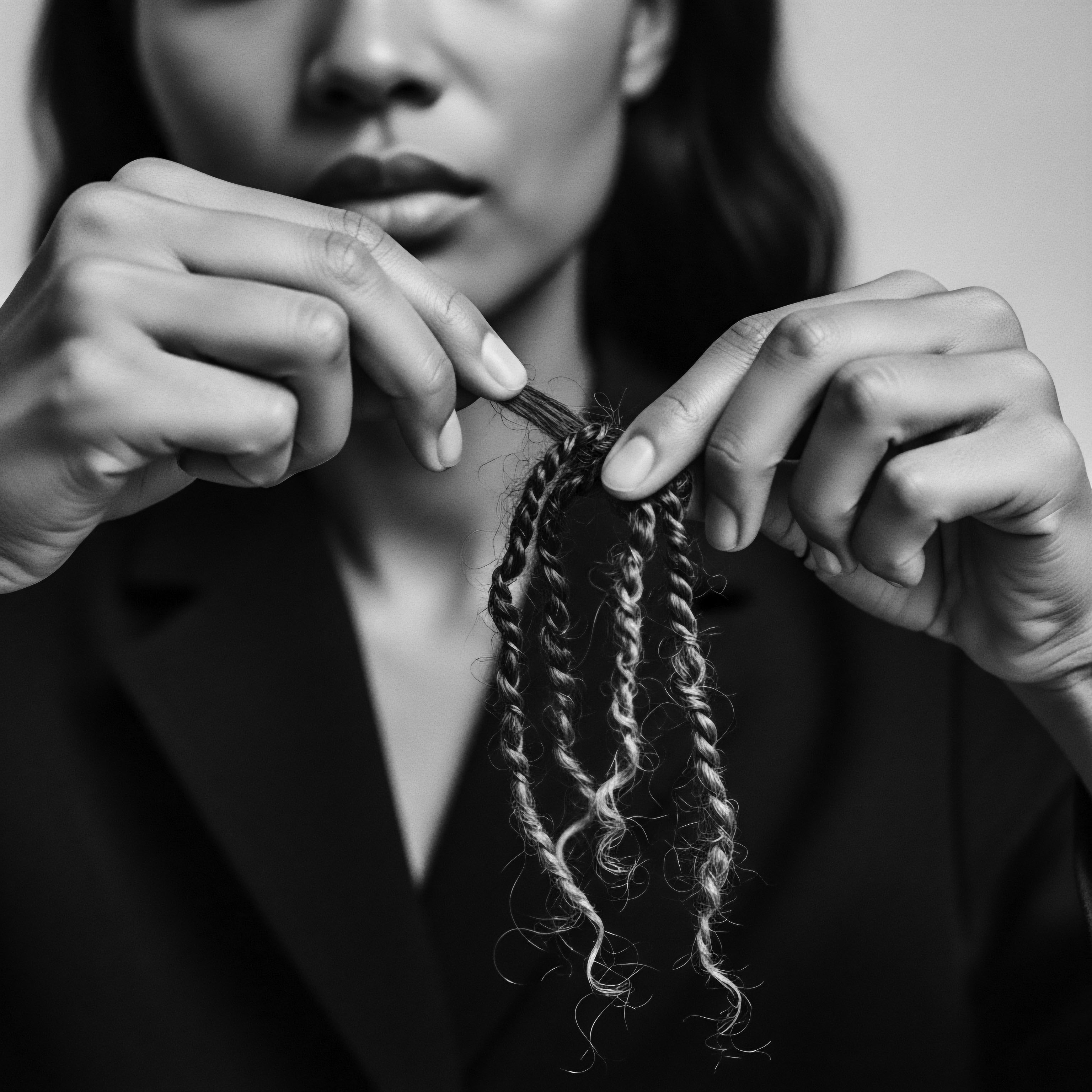
Fundamentals
The essence of Hair Product Development, within Roothea’s ‘living library,’ transcends mere commercial formulation; it embodies a profound conversation with heritage, an echoing of ancestral wisdom, and a continuous quest for nurturing the diverse textures that crown human heads. At its most fundamental, Hair Product Development represents the thoughtful creation of substances designed to cleanse, condition, style, and preserve the vitality of hair. This understanding begins not in modern laboratories, but in the earliest communal spaces where human hands first gathered botanicals and natural elements to care for their strands. The initial meaning of such development was deeply intertwined with survival, hygiene, and the expression of identity within a community.
From the dawn of human experience, individuals sought ways to manage and adorn their hair, a natural extension of self that spoke volumes without uttering a single word. Early Hair Product Development involved the ingenious utilization of what the earth offered ❉ clays for cleansing, plant oils for conditioning, and natural resins for styling. These rudimentary yet effective preparations laid the groundwork for all that followed. The very act of preparing these materials, often through communal rituals, was a foundational aspect of care, a practice that reinforced social bonds and passed down generational knowledge.

The Earliest Expressions of Care
Long before the advent of industrial processes, the earliest forms of Hair Product Development were rooted in a deep, intuitive understanding of natural properties. People observed how certain leaves, seeds, or minerals interacted with hair and scalp, leading to discoveries that formed the bedrock of ancient beauty traditions. These were not just functional applications; they were often sacred rituals, connecting individuals to their environment and their lineage.
- Plant-Based Oils ❉ Many early societies relied on oils extracted from local flora, such as olive oil in the Mediterranean or shea butter in West Africa, to moisturize and protect hair from environmental elements.
- Clays and Ash ❉ These natural absorbents served as early cleansing agents, removing impurities while often imparting beneficial minerals to the scalp.
- Herbal Infusions ❉ Decoctions from various herbs were used to rinse hair, impart scent, and address scalp conditions, reflecting an early understanding of botanical pharmacology.
Hair Product Development, at its core, is the thoughtful creation of substances to care for hair, a practice deeply rooted in ancestral wisdom and the earth’s bounty.
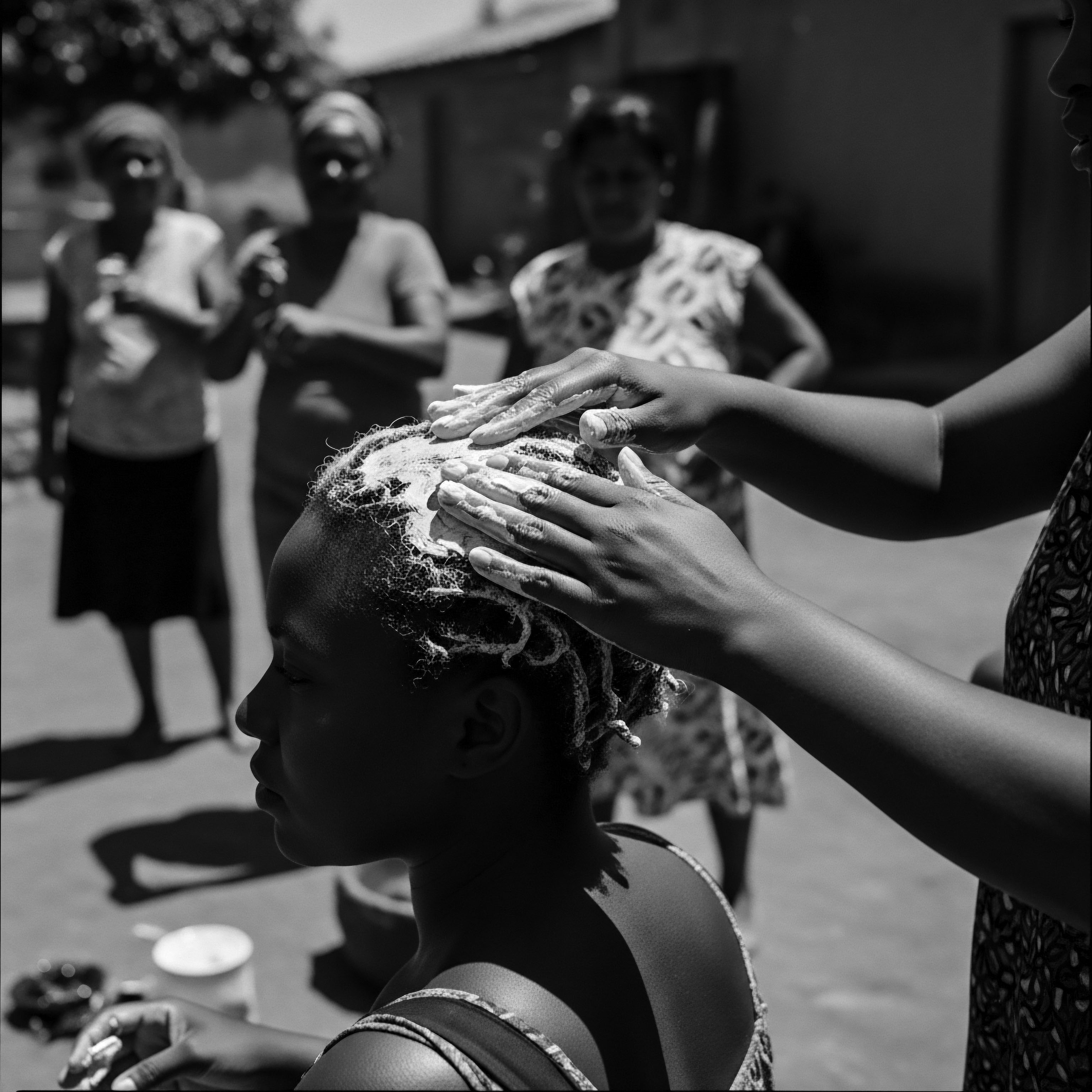
The Genesis of Intentional Formulation
The transition from simple application to intentional formulation marks a significant point in Hair Product Development. This involved not just using a single ingredient, but combining several to achieve a desired outcome, perhaps a smoother texture, a particular sheen, or a stronger hold for intricate styles. These early formulations, passed down through oral tradition and demonstration, represent the genesis of a deliberate craft, a nascent science born from necessity and a reverence for appearance.
The understanding of Hair Product Development at this fundamental stage is an acknowledgment that hair care has always been a journey of discovery, adaptation, and cultural expression. It speaks to the universal human desire to care for oneself, to connect with community, and to project identity through one’s crown, a story that begins with the simplest of ingredients and the most profound of intentions.
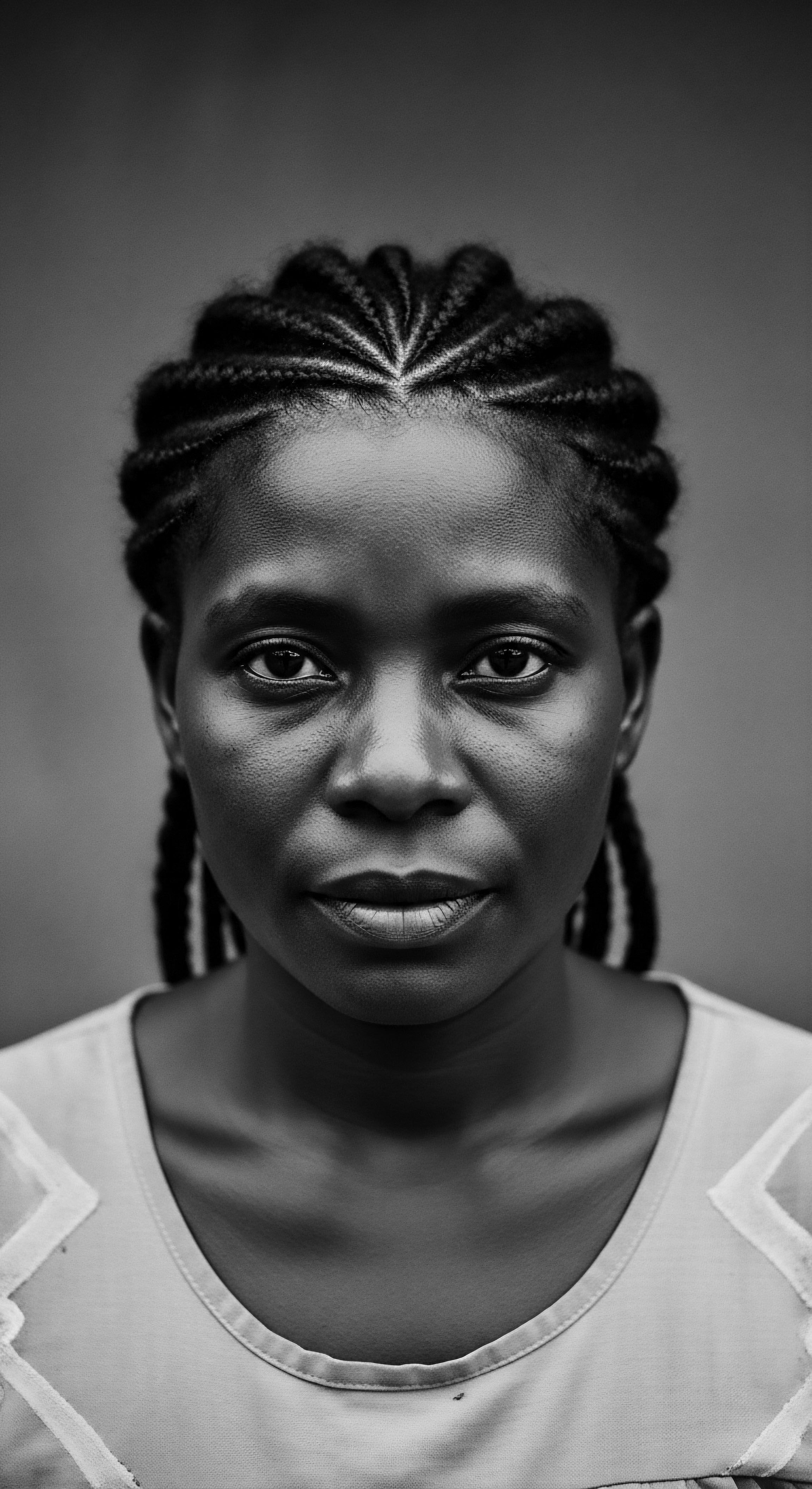
Intermediate
Moving beyond the rudimentary, the intermediate understanding of Hair Product Development unveils a rich tapestry of cultural evolution and the nuanced application of knowledge across diverse communities. This phase of its meaning acknowledges the deliberate refinement of formulations, the emergence of specialized techniques, and the profound impact of collective experience on shaping hair care practices. It is here that the significance of communal knowledge, passed through generations, becomes unmistakably clear, particularly within the vibrant traditions of textured hair heritage.
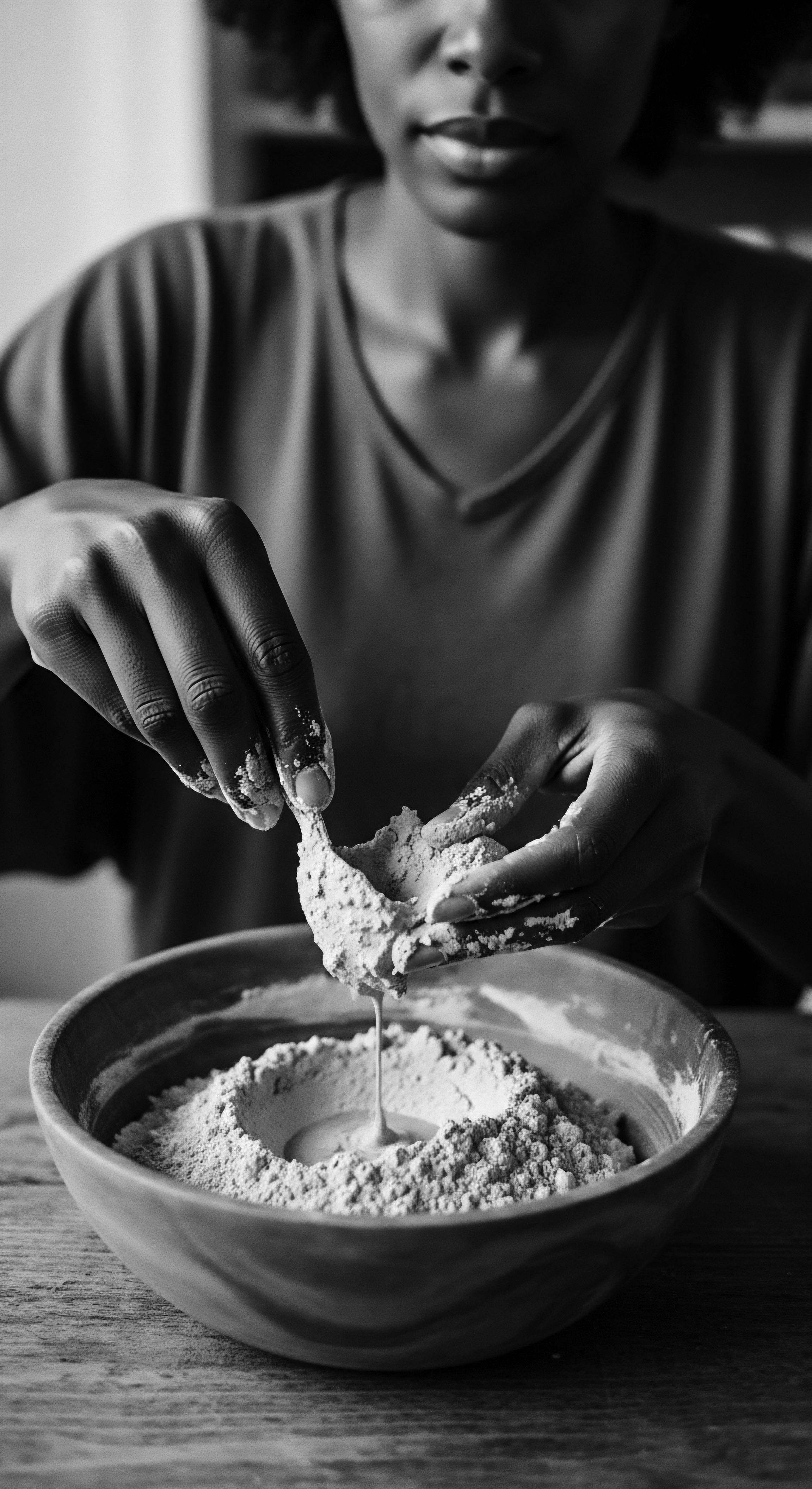
The Evolution of Communal Knowledge
Across continents, various civilizations cultivated distinct approaches to Hair Product Development, each reflecting their unique environments, social structures, and aesthetic ideals. In many African societies, for instance, hair was far more than an adornment; it was a complex language, communicating age, marital status, social rank, and even spiritual beliefs. (Afriklens, 2024).
This deep cultural meaning propelled the development of sophisticated care rituals and product formulations. The preparation of hair treatments often became a communal affair, a space for storytelling, bonding, and the transfer of specialized skills from elder to youth.
Consider the use of shea butter, a staple across many West African communities. Its preparation from the nuts of the shea tree involved a laborious process, often undertaken by women, transforming raw materials into a nourishing balm. This was not merely a product; it was a tangible representation of shared labor, inherited wisdom, and a profound understanding of its emollient properties for skin and hair. (Katherine Haircare, 2025).
The continuous application of such natural butters and oils helped to maintain moisture and protect textured hair from harsh climates, a testament to practical knowledge developed over centuries. (Sellox Blog, 2021).
The development of hair products, especially for textured hair, reflects a profound cultural evolution, where communal knowledge and traditional ingredients shaped practices for generations.

Early Scientific Principles in Traditional Practices
While modern science provides precise chemical analyses, ancestral practices often intuitively applied principles we now understand scientifically. The use of certain plant extracts for their cleansing properties, or specific oils for their ability to seal moisture into the hair shaft, demonstrates an empirical understanding of hair biology. The Himba tribe in Namibia, for example, utilizes a mixture of clay and cow fat, known as otjize, not only for its aesthetic appeal but also for its protective qualities against the sun and its aid in detangling hair.
(22 Ayur, 2023). This ancient practice, though not articulated in chemical terms, reveals a deep awareness of how to fortify hair against environmental stressors.
The meaning of Hair Product Development at this intermediate level extends to recognizing the ingenuity embedded within these historical practices. It involves seeing how early societies, without laboratories or microscopes, observed, experimented, and refined their methods, laying the groundwork for the more complex formulations we see today. The challenges posed by tightly coiled, kinky, and curly hair textures, which are prone to dryness and breakage, led to the creation of highly moisturizing and protective regimens. (Syensqo, 2024).
This historical context also illuminates the unfortunate disruptions caused by colonialism and the transatlantic slave trade. Enslaved Africans were often stripped of their traditional hair tools and practices, forced to abandon their intricate styles and communal rituals. (Afriklens, 2024). This deliberate act aimed to strip them of their identity.
Despite these oppressive efforts, hair continued to serve as a silent yet potent expression of identity and resistance, with cornrows sometimes encoding maps to freedom. (Afriklens, 2024; Darkspark, 2023).
| Traditional Ingredient (Ancestral Origin) Shea Butter (West Africa) |
| Ancestral Application/Benefit Deep moisturization, protective barrier against elements, scalp nourishment. |
| Modern Product Category/Ingredient Link Emollients, conditioners, leave-in creams, scalp treatments (e.g. ceramides, fatty acids). |
| Traditional Ingredient (Ancestral Origin) Chebe Powder (Chad) |
| Ancestral Application/Benefit Length retention, breakage prevention, moisture sealing for coily hair. |
| Modern Product Category/Ingredient Link Protein treatments, bond-repairing products, moisturizing masks (e.g. hydrolyzed proteins, humectants). |
| Traditional Ingredient (Ancestral Origin) Aloe Vera (Various African regions) |
| Ancestral Application/Benefit Scalp soothing, hydration, anti-inflammatory properties. |
| Modern Product Category/Ingredient Link Soothing serums, hydrating gels, scalp tonics (e.g. hyaluronic acid, allantoin). |
| Traditional Ingredient (Ancestral Origin) Rhassoul Clay (Morocco) |
| Ancestral Application/Benefit Gentle cleansing without stripping natural oils, mineral enrichment. |
| Modern Product Category/Ingredient Link Clay masks, clarifying shampoos (e.g. bentonite clay, activated charcoal). |
| Traditional Ingredient (Ancestral Origin) These ancient practices offer profound insights into the enduring needs of textured hair, affirming the wisdom of heritage in contemporary product development. |
The intermediate phase of understanding Hair Product Development compels us to look beyond the immediate shelf and into the deep currents of human history, where care for hair was, and remains, a vital thread connecting individuals to their heritage, community, and self-worth.

Academic
The academic meaning of Hair Product Development is a complex, multidisciplinary inquiry, dissecting the scientific, cultural, socio-economic, and political forces that have shaped the creation of hair care solutions, particularly for textured hair. This scholarly lens reveals that Hair Product Development is not merely a commercial pursuit; it is a critical interface where elemental biology meets ancestral practice, and where market dynamics frequently collide with profound issues of identity, systemic bias, and historical resilience. It represents a continuous dialogue between the intrinsic properties of hair and the societal narratives imposed upon it, especially concerning Black and mixed-race hair experiences.
From a scientific standpoint, Hair Product Development necessitates a deep comprehension of hair’s unique structural and chemical composition. Textured hair, characterized by its elliptical follicle shape and varied curl patterns—from loose waves to tight coils and kinks—possesses distinct needs regarding moisture retention, elasticity, and susceptibility to breakage. (Syensqo, 2024).
Product developers must consider factors such as the hair’s porosity, its natural lipid layer, and the mechanical stresses it endures during styling. This biological understanding is then overlaid with the historical context of how these inherent characteristics have been perceived and treated within different cultural paradigms.
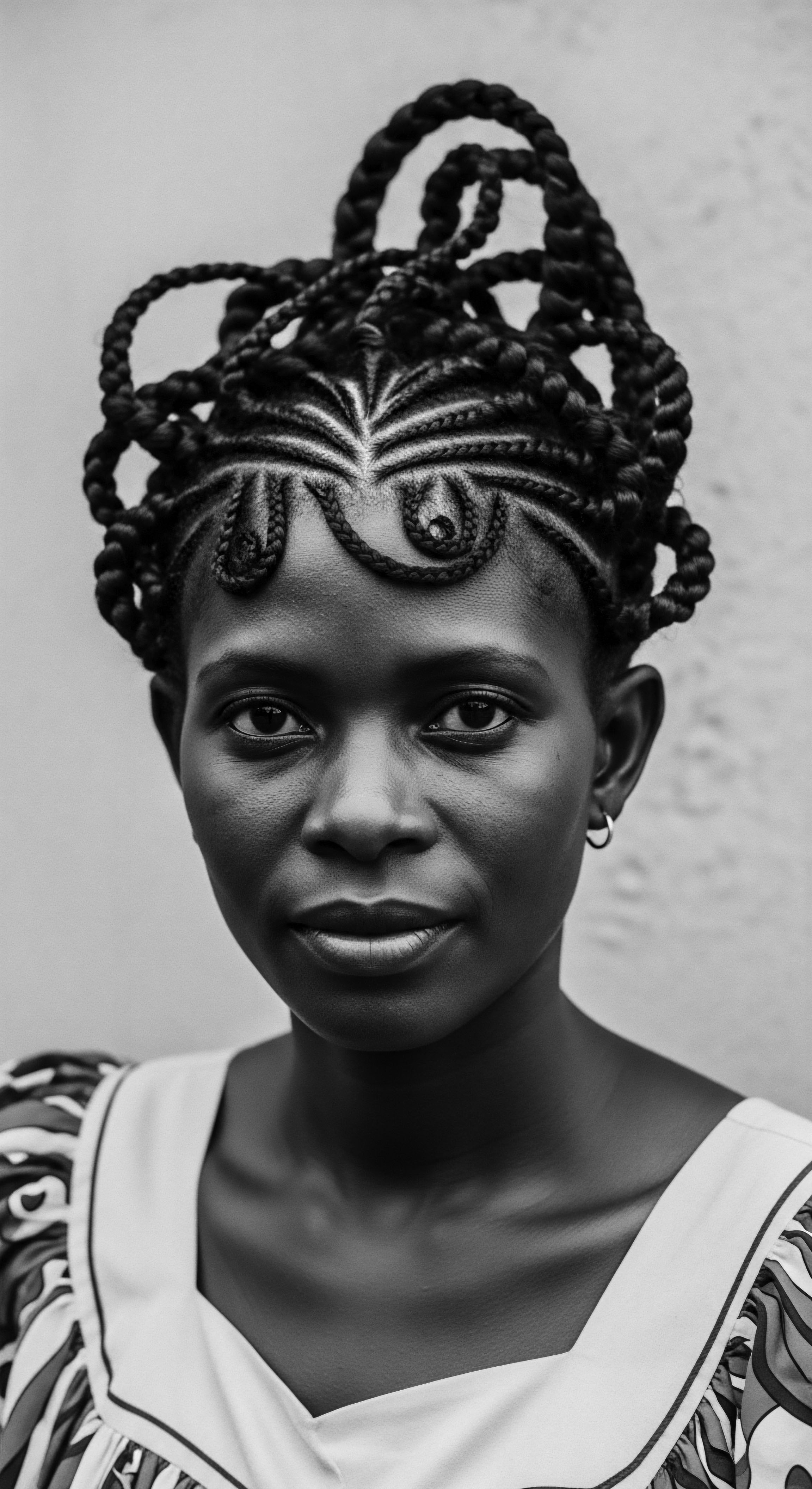
The Interconnectedness of Hair, Identity, and Commerce
The development of hair products for textured hair is inextricably linked to the broader historical and sociological landscape of race and beauty. For centuries, Eurocentric beauty standards have dominated global perceptions, often pathologizing tightly coiled hair as undesirable or “unprofessional.” (University of Michigan, 2000; Darkspark, 2023). This societal pressure created a market demand for products designed to alter hair texture, such as lye-based chemical relaxers, which gained popularity in the early 20th century. (Refinery29, 2021; Nature’s Little Secret, 2025).
The widespread adoption of these products, while offering a semblance of conformity, often came at the cost of hair health and, more significantly, a disconnection from ancestral hair forms. (Fulham Scalp and Hair Clinic, 2021).
The economic dimensions of Hair Product Development for textured hair are particularly telling. Despite historical marginalization, the Black hair care market represents a substantial and continuously growing segment of the beauty industry. The global Black Hair Care Market is projected to grow from USD 3.2 billion in 2023 to approximately USD 4.9 billion by 2033, registering a compound annual growth rate (CAGR) of 4.3% over the forecast period (2024-2033).
This robust market performance, despite facing systemic barriers, speaks to the enduring dedication and significant purchasing power of Black consumers who often spend considerably more on hair care products tailored to their unique needs. (Thejembe, 2023; The Worldmetrics, 2023).
Hair Product Development, especially for textured hair, stands as a complex interplay of scientific understanding, cultural identity, and market forces, profoundly shaped by historical and socio-political dynamics.
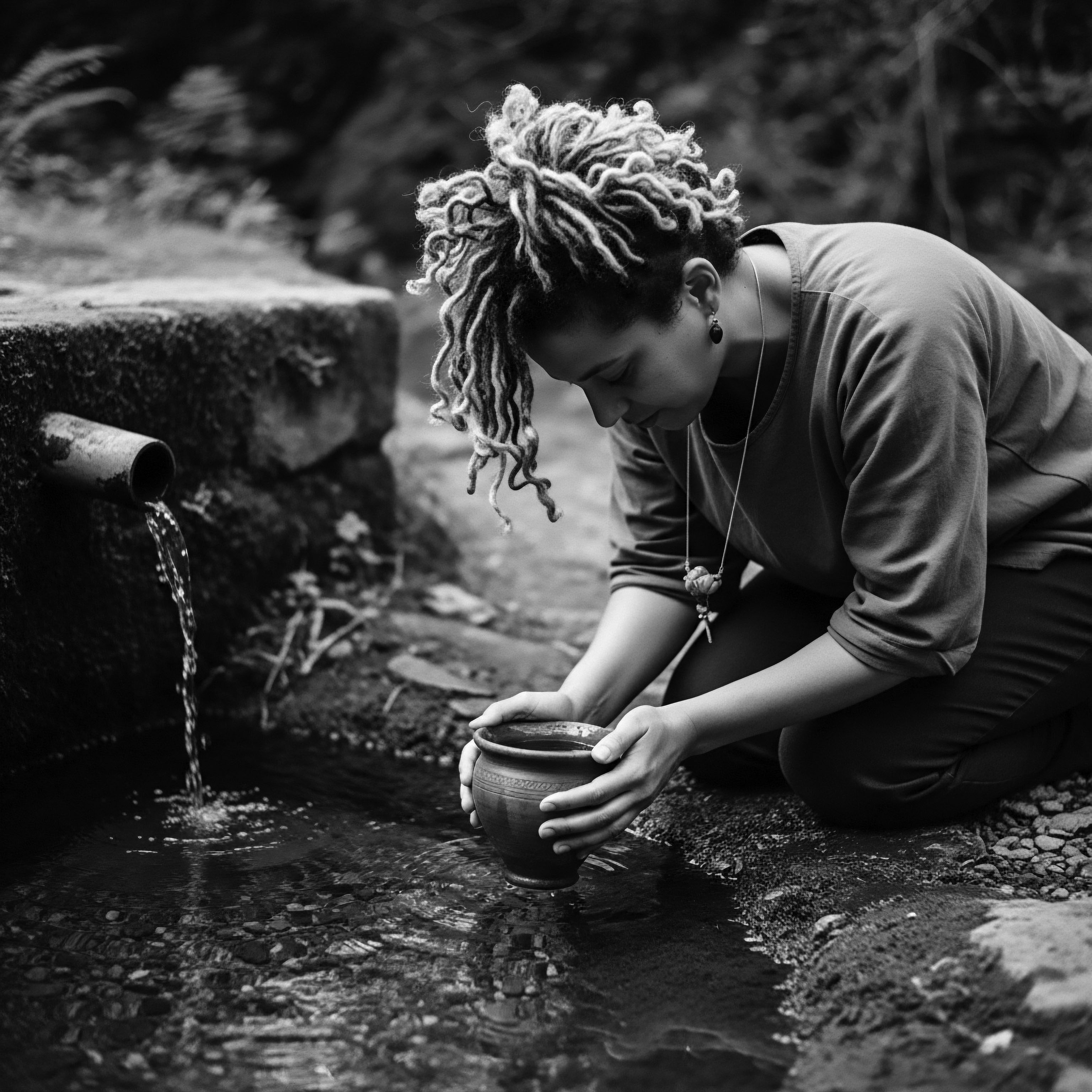
A Historical Case Study ❉ Madam C.J. Walker and the Dawn of Black Hair Care Entrepreneurship
A compelling case study illuminating the profound connection between Hair Product Development and textured hair heritage is the entrepreneurial journey of Madam C.J. Walker. Born Sarah Breedlove in 1867 to formerly enslaved parents, Walker experienced severe scalp conditions and hair loss, issues prevalent among Black women of her era due to harsh living conditions and inadequate hygiene practices. (Nature’s Little Secret, 2025; Beautylish, 2025).
Recognizing a desperate need for specialized care, she developed a line of hair products, including her famous “Wonderful Hair Grower,” designed to improve scalp health and promote hair growth. (Nature’s Little Secret, 2025).
Walker’s approach was revolutionary, not only for her product formulations, which often contained natural ingredients, but also for her business model. She built an empire by training thousands of Black women as “Walker Agents,” empowering them economically and fostering a sense of community. (Living on Earth, 2024; Annie Malone and Madam C.J. Walker, 2023).
Her success transcended mere commerce; it was a powerful act of self-determination and a direct response to a beauty industry that largely ignored or disparaged Black hair. Walker became America’s first recognized self-made female millionaire, demonstrating the immense potential and unmet needs within the Black hair care segment. (Living on Earth, 2024; Annie Malone and Madam C.J. Walker, 2023).
Her work represents a critical juncture in Hair Product Development, showcasing how a deep understanding of specific hair needs, coupled with a commitment to community empowerment, can forge an entirely new industry. Walker’s legacy is not just about the products she created; it is about the dignity, economic opportunity, and self-acceptance she helped cultivate within the Black community through her innovative approach to hair care. Her contributions laid a foundational blueprint for subsequent Black entrepreneurs and continue to inspire the contemporary natural hair movement, which seeks products that celebrate and nourish natural textures. (Thejembe, 2023; Safo Hair, 2024).
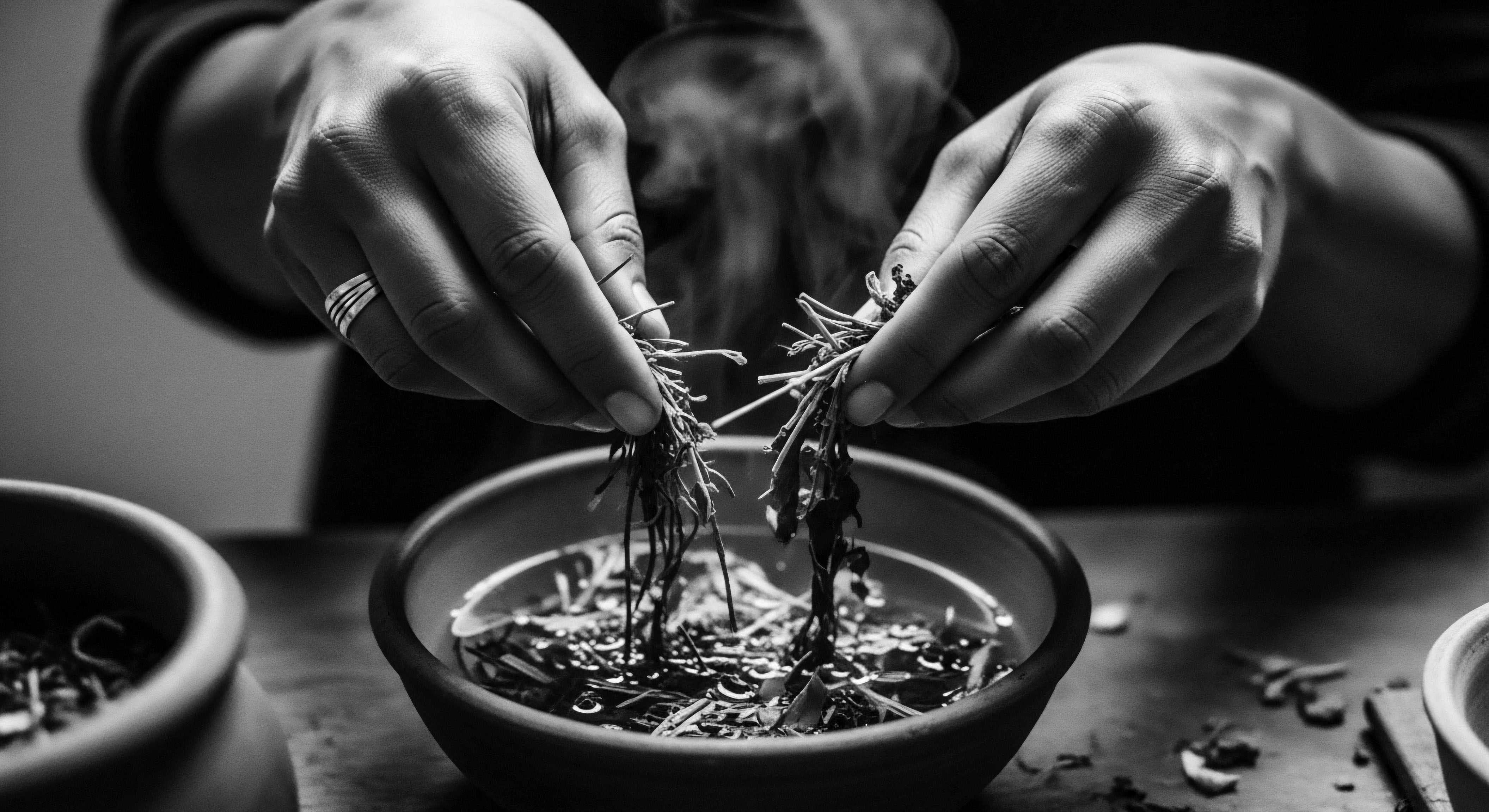
The Enduring Legacy of Ancestral Practices
Academic discourse on Hair Product Development also involves a critical examination of ancestral practices, often validated by modern scientific understanding. The traditional Chadian Chebe powder, a blend of roasted and ground seeds and herbs, is a prime example. For generations, Basara Arab women in Chad have used Chebe powder mixed with oils or butters to coat their hair, promoting length retention by preventing breakage and locking in moisture. (The History of Chebe Powder, 2025; Premium Beauty News, 2024).
This practice, passed down through rituals, directly addresses the inherent dryness and breakage susceptibility of coily hair types. (The History of Chebe Powder, 2025).
The academic perspective seeks to understand how these traditional formulations, often born from empirical observation over centuries, align with modern trichology and cosmetic science. It recognizes that the knowledge held within indigenous and diasporic communities represents a profound reservoir of Hair Product Development wisdom, often predating and sometimes surpassing the understanding of mainstream cosmetic science until recent decades. This involves analyzing the ethnobotanical properties of traditional ingredients and their biomechanical effects on hair, connecting ancient rituals to contemporary scientific validation.
The exploration of Hair Product Development from an academic vantage point necessitates a commitment to decolonizing beauty standards and celebrating the inherent diversity of human hair. It demands an examination of how historical power structures have influenced product availability, marketing, and the very perception of what constitutes “good” hair. The academic definition of Hair Product Development is thus a call for inclusive innovation, one that honors the past, addresses present needs, and builds a future where every strand, regardless of its texture, is understood, valued, and celebrated.
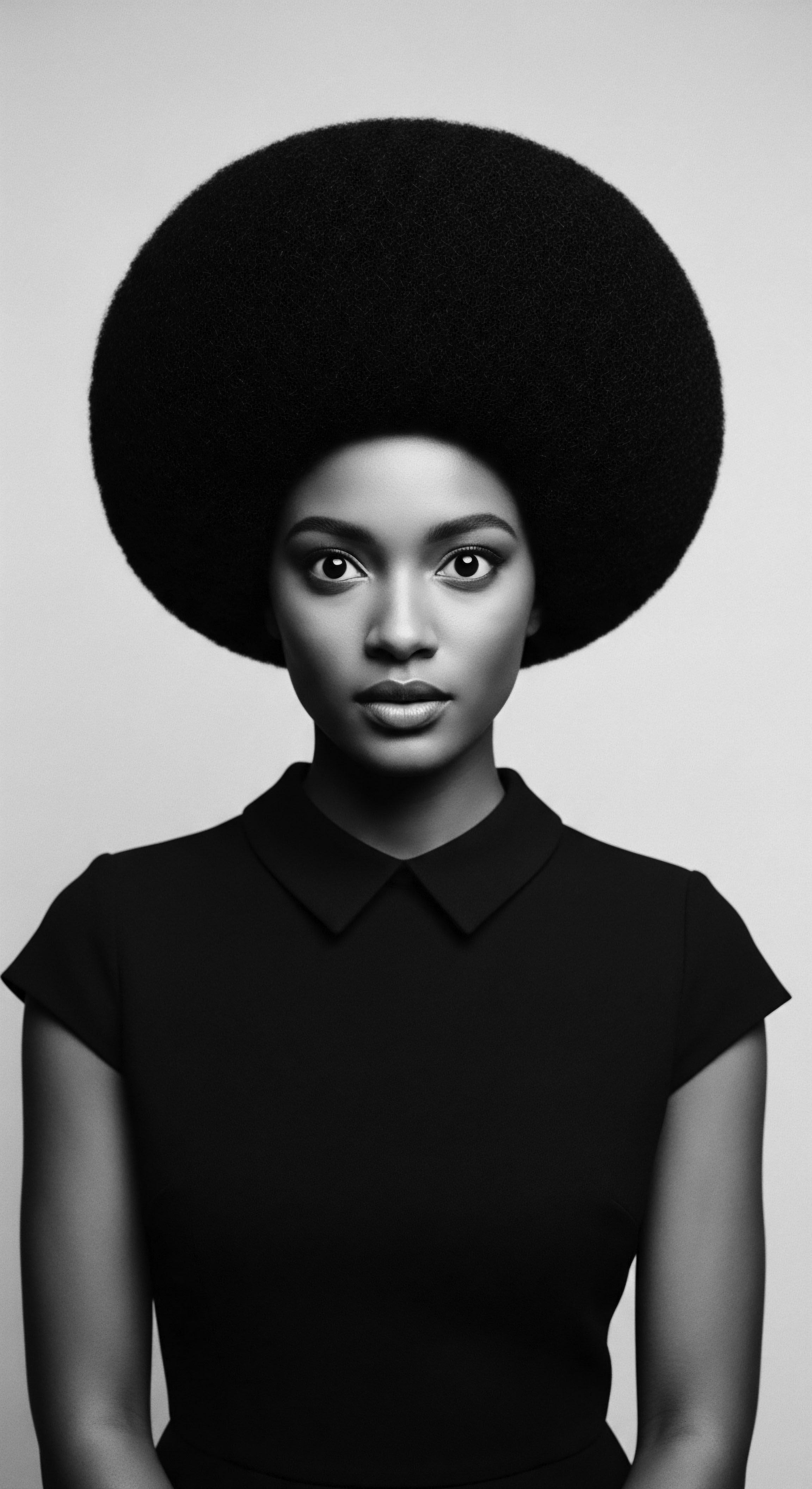
Reflection on the Heritage of Hair Product Development
The journey through Hair Product Development, from its elemental beginnings to its complex academic interpretations, culminates in a profound reflection on its enduring heritage and evolving significance within the textured hair communities. It is a journey that speaks to the very ‘Soul of a Strand,’ recognizing hair not merely as a biological structure, but as a living testament to resilience, identity, and ancestral wisdom. The meaning of Hair Product Development, viewed through this lens, becomes an ongoing narrative, a dialogue between the past and the present, shaping the future of care.
The echoes from the source, those ancient practices of gathering botanicals and crafting simple balms, remind us that the earliest developers were sensitive historians of their environment, understanding the earth’s offerings as gifts for wellbeing. The tender thread of living traditions, passed from generation to generation, showcases how communal care rituals solidified social bonds and preserved a rich legacy of knowledge, even in the face of immense adversity. Hair, particularly for Black and mixed-race communities, became a silent yet powerful medium of communication, a repository of history, and a defiant symbol of self-affirmation when other forms of expression were suppressed. (Afriklens, 2024; Darkspark, 2023).
The unfolding story of Hair Product Development reveals an unwavering human desire to nurture, adorn, and express through hair. It is a story of ingenuity born from necessity, of women like Madam C.J. Walker who, despite systemic barriers, created pathways to economic independence and self-acceptance through tailored hair solutions.
Her entrepreneurial spirit, rooted in a deep understanding of the needs of her community, paved the way for a vibrant industry that continues to grow and diversify, with the global Black Hair Care Market projected to reach significant valuations in the coming years. (MarketResearch.biz, 2023; Business Research Insights, 2025).
The evolution of Hair Product Development for textured hair is a testament to resilience, identity, and the enduring power of ancestral wisdom.
Today, as we stand at the precipice of new scientific discoveries and a renewed appreciation for natural textures, the spirit of Hair Product Development invites us to look back with reverence and forward with conscious intention. It compels us to seek formulations that not only perform scientifically but also honor the historical context and cultural significance of textured hair. This involves moving beyond superficial trends to genuinely understand the unique needs of coils, curls, and kinks, drawing inspiration from time-honored ingredients and practices. It is a call to create products that do not erase heritage but rather celebrate and amplify it, fostering a deeper connection to one’s roots and an unbounded sense of self.
The future of Hair Product Development, especially within Roothea’s vision, is one where every bottle, every jar, carries the wisdom of generations, a testament to the journey of a strand, and a promise of holistic care that nourishes not only the hair but also the spirit it embodies.
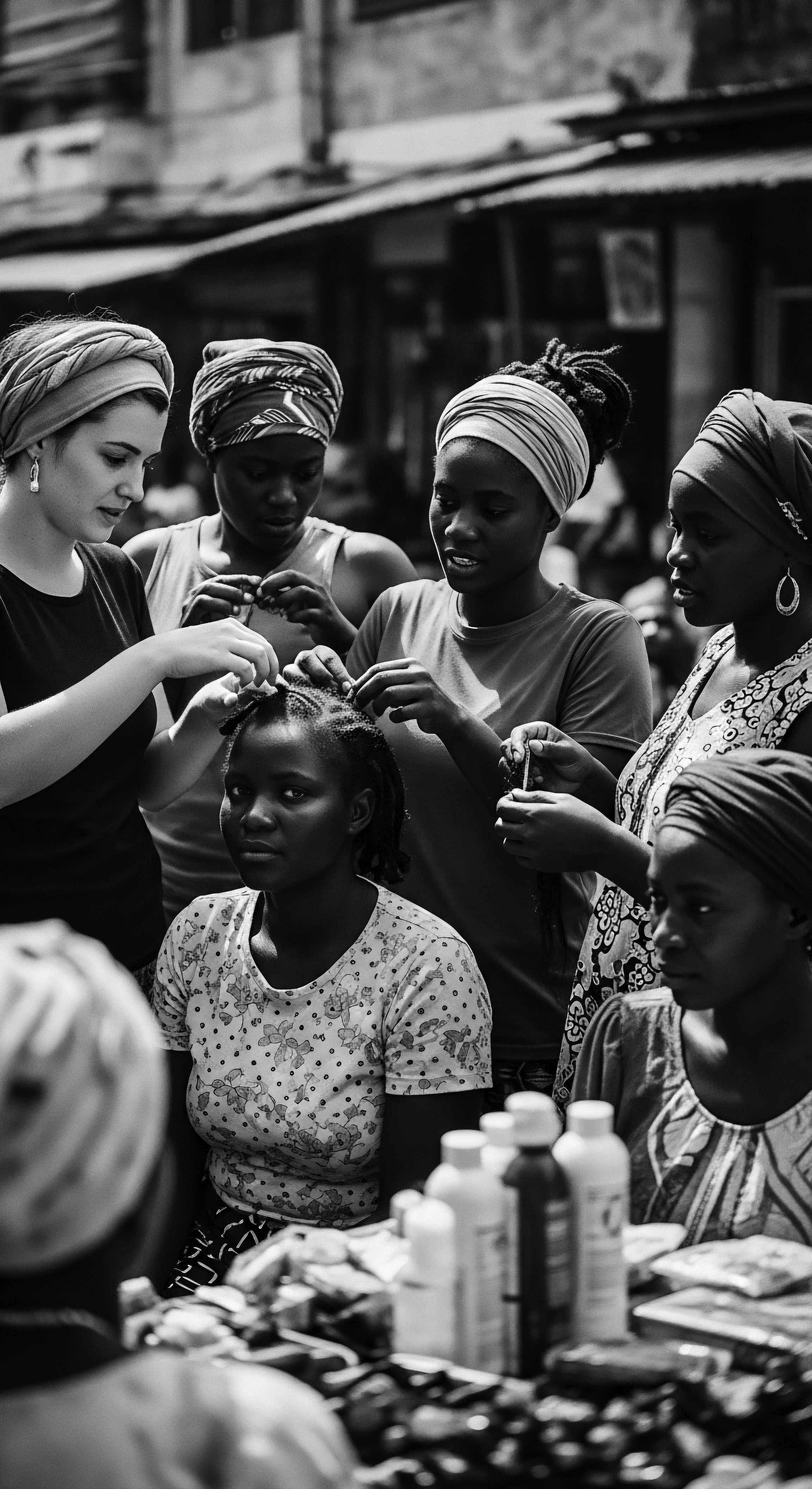
References
- Afriklens. (2024). African Hairstyles ❉ Cultural Significance and Legacy.
- Annie Malone and Madam C.J. Walker ❉ Pioneers of the African American Beauty Industry. (2023).
- Ashby, S.P. (2016). Archaeologies of Hair ❉ an introduction. Internet Archaeology 42.
- Business Research Insights. (2025). Black Hair Care Market Growth Analysis | 2025 To 2033.
- Darkspark. (2023). The Complex History of Black Hair.
- Katherine Haircare. (2025). This Homemade Afro Hair Product is 10x Better than Just Shea.
- Leidenanthropologyblog. (2017). ‘Hairstyle Politics’ ❉ Decolonizing Beauty Standards.
- Living on Earth. (2024). Roots of Black Hair Care.
- MarketResearch.biz. (2023). Black Hair Care Market Size, Share, Trends & Forecasts By 2033.
- Nature’s Little Secret. (2025). The History of Black Hair Care ❉ Trailblazers Who Paved the Way.
- Premium Beauty News. (2024). Ancestral hair-paste ritual gains new life in Chad.
- Refinery29. (2021). The Evolution Of The Natural Hair Movement.
- Safo Hair. (2024). The Evolution of Black Hair Products ❉ A Journey from Homemade Remedies.
- Sellox Blog. (2021). Ancient African Hair Growth Secrets For Healthy Hair.
- Syensqo. (2024). The Future of Textured Hair Care Products.
- The History of Chebe Powder ❉ An Ancient African Hair Secret for Hair Growth. (2025).
- Thejembe. (2023). The Evolution of Natural Hair Products for Black Women.
- The Worldmetrics. (2023). Black Hair Care Market to Reach USD 4.6 Bn by 2032.
- Umthi. (2023). The Cultural Significance and Representation of Afro-Textured Hair.
- University of Michigan. (2000). Black Women and Identity ❉ What’s Hair Got to Do With It?
- 22 Ayur. (2023). The Ancient Natural Ways of Hair Care Across Continents.
